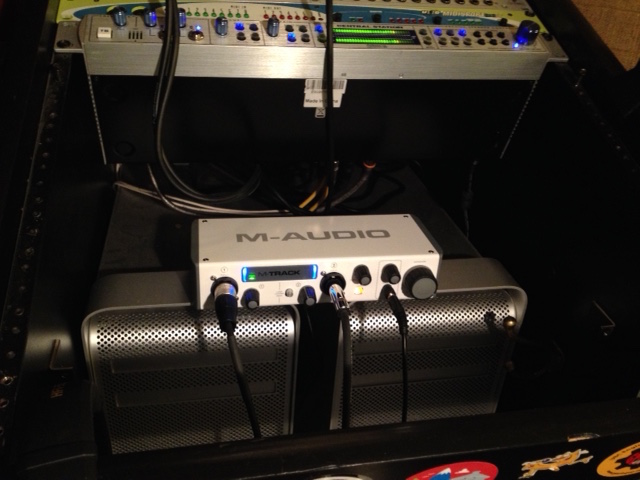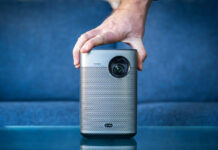 It can’t get any more simple than this. The M-Audio M-Track MkII is as straight-forward as you can get for a two-channel USB audio interface. Two inputs, two outputs and a headphone jack – that’s about it.
It can’t get any more simple than this. The M-Audio M-Track MkII is as straight-forward as you can get for a two-channel USB audio interface. Two inputs, two outputs and a headphone jack – that’s about it.
Well, there are a few knobs and switches to go with those jacks, but you get the picture.
Short, Sweet and to the Point
The simplicity of the M-Track MkII is its charm. I didn’t expect to have to crack open a manual and I’m pleased to say that I didn’t have to. Setting this interface up on PC and Mac was a breeze. Both platforms recognized the device, loaded class compliant drivers and the M-Track was ready to be used.
The interface supports a bit-depth / sample rate of up to 24-bit / 48kHz which should be just fine for most home-studio users.
Knobs, Switches and Things
 The front of the unit sports two combo inputs that will accept either XLR or ¼” jacks. If you insert a ¼” jack into the input, there is a switch to set the appropriate impedance level for a line level device (keyboard/CD player) or an instrument (electric guitar or bass).
The front of the unit sports two combo inputs that will accept either XLR or ¼” jacks. If you insert a ¼” jack into the input, there is a switch to set the appropriate impedance level for a line level device (keyboard/CD player) or an instrument (electric guitar or bass).
Each input has a separate gain control to set the incoming signal levels appropriately and a 48v switch allows you to supply phantom power to the mic inputs for condensor microphones.
A mix knob gives the user the ability to monitor signals from the inputs, the computer or a combination of both.
Finally, a Monitor knob controls the volume fed to the two rear ¼” outputs.
Taking it for a Spin
 I wired the M-Track MkII into my studio and was up and running in a matter of a couple of minutes. The front panel has a couple of blue LED lines that light up when USB power is present – there’s also a little blue LED on the back that does the same. There are two four-stage LED meters (two green, one orange and one red line) that give you immediate feedback on how hot your incoming signal is.
I wired the M-Track MkII into my studio and was up and running in a matter of a couple of minutes. The front panel has a couple of blue LED lines that light up when USB power is present – there’s also a little blue LED on the back that does the same. There are two four-stage LED meters (two green, one orange and one red line) that give you immediate feedback on how hot your incoming signal is.
I plugged a couple of condensor mics from different vendors and got a nice clean sound from the pre-amps. Dynamic mics were fairly good – a Shure SM58 and SM57 were handled nicely, but a larger diaphragm dynamic such as Heil PR40 and Shure SM7B needed to have the preamp cranked to get a semi-decent signal – even then, I was wishing it would go to “11”. Regardless, the signal was clean and had little noise.
The reported latency at 128 samples was 9.4 ms which produced a barely perceptible slap-back artifact. 64 samples brought that delay down to a 7.4 ms delay. All in all, a pretty decent spec for this little box.
I took the M-Track on a last-minute remote recording gig and I’m pleased to say it performed without a hiccup. I was recording a band live off-the-floor at a video shoot. I mixed the performance on the fly with four mics going into a Soundcraft mixer feeding the M-Track MkII via the main stereo bus.
Barring the fact that I couldn’t have mics in the shot (except for an RCA replica) and the reflective room, the sound wasn’t half bad. I don’t think I’d have been able to get a better sound under those conditions with other interfaces.
Keep it Simple
What more can I say? The M-Audio M-Track MkII USB Audio interface is simple to setup and simple to use. There are no fancy bells and whistles. It does what it’s supposed to and it does a great job at it too. If you’re looking for something small, portable and simple to start recording with, then I’d be more than willing to suggest taking a look at this little guy. Check it out at Best Buy or order it online. Best Buy has a very customer-friendly return policy if you’re unhappy with your purchase. Go ahead – give it a shot!



